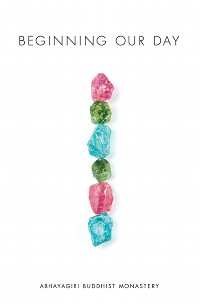The Simplicity of Buddho
Ajahn Pasanno

These last two weeks were supposed to be a time of retreat for me, but it didn’t quite end up that way. I had to catch up on work and help out with some of the construction. While I was working, something came to mind that I found very fruitful: To work with the busyness—the activity that I was involved in—I returned to the very simple practice of repeating the word Buddho. Buddho is the name of the Buddha. It means “to awaken” or “to be awake.” It’s a basic, foundational practice that is used throughout Thailand, particularly in the northeast. I used that short mantra in conjunction with the breath. On the in-breath, “Bud,” on the out-breath, “dho.”
The mind is so easily attracted to proliferation and embellishment: Give me a story, a drama, something to bite into—give me anything, so long as I can play the starring role. When we recite Buddho, we are not feeding, encouraging or supporting the embellishment and dramatization of experience.
On the in-breath, “Bud,” on the out-breath, “dho,”—it’s simple and helpful. Because it is the name of the Buddha, it’s a reminder of bringing the presence of the Buddha into each in-breath and each out-breath. It’s bringing the recollection of the Buddha—both as the teacher and as the archetype of the enlightened being—into the heart, the mind, and consciousness.
Buddho is a powerful presence because it cuts through our tendency to fill the mind with worries, concerns, desires, fantasies, proliferations, ideas, ideals, views, and opinions. All this clutter is the antithesis of the enlightened being. We can remember that by using this simple word. On the in-breath, “Bud.” On the out-breath, “dho.”
This reflection is from the newly released two part collection of Dhamma Reflections:





